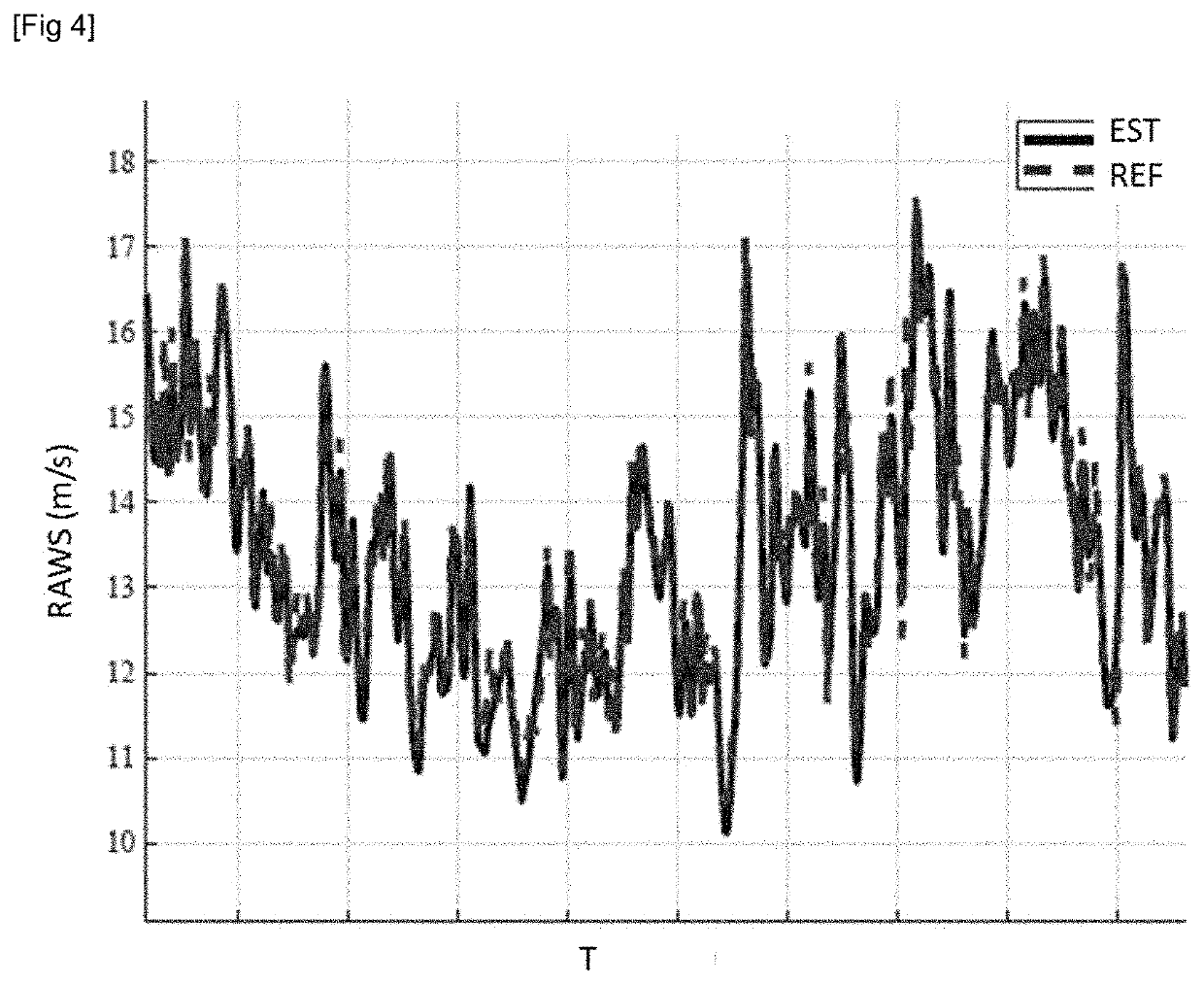METHOD OF DETERMINING AVERAGE WIND SPEED BY MEANS OF A LiDAR SENSOR
a lidar sensor and wind speed technology, applied in the field of renewable energy, can solve the problems of inability to accurately represent the wind speed, the current control and monitoring techniques of wind turbines do not allow accounting for measurement, and the energy yield of wind turbines needs to be further improved
- Summary
- Abstract
- Description
- Claims
- Application Information
AI Technical Summary
Benefits of technology
Problems solved by technology
Method used
Image
Examples
example
[0118]The features and advantages of the method according to the invention will be clear from reading the example hereafter.
[0119]For this example, the wind is simulated by a simulator, as well as the LiDAR sensor measurements, and the average wind speed is determined by the method according to an embodiment of the invention. This embodiment of the invention uses the spatial and temporal coherence equations described, and it determines the average longitudinal component of the wind speed in a vertical plane.
[0120]According to a first configuration, the measurement plane distances are: [50, 70, 90, 100, 120, 140, 160, 180, 190, 200] meters.
[0121]FIG. 3 illustrates a comparison of the average wind speed RAWS in m / s as a function of time T for a 100 m distance between the rotor plane and the vertical plane. In this figure, the curve in dotted line represents reference curve REF and the curve in solid line represents the average wind speed curve EST obtained by the method according to t...
PUM
 Login to View More
Login to View More Abstract
Description
Claims
Application Information
 Login to View More
Login to View More - R&D
- Intellectual Property
- Life Sciences
- Materials
- Tech Scout
- Unparalleled Data Quality
- Higher Quality Content
- 60% Fewer Hallucinations
Browse by: Latest US Patents, China's latest patents, Technical Efficacy Thesaurus, Application Domain, Technology Topic, Popular Technical Reports.
© 2025 PatSnap. All rights reserved.Legal|Privacy policy|Modern Slavery Act Transparency Statement|Sitemap|About US| Contact US: help@patsnap.com



